The Economics and Statistics Division maintains archives of previous publications for accountability purposes, but makes no updates to keep these documents current with the latest data revisions from Statistics Canada. As a result, information in older documents may not be accurate. Please exercise caution when referring to older documents. For the latest information and historical data, please contact the individual listed to the right.
<--- Return to Archive
For additional information relating to this article, please contact:
December 20, 2017NOVA SCOTIA QUARTERLY POPULATION ESTIMATES AS OF OCTOBER 1, 2017 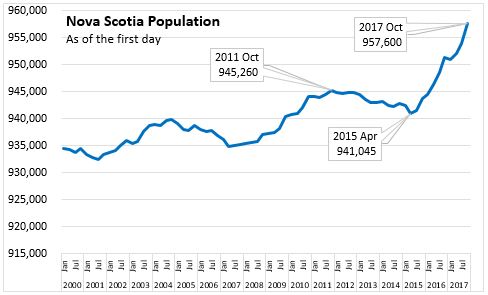
Nova Scotia’s population increased by 3,731 between July 1, 2017 and October 1, 2017. The population as of October 1, 2017 stands at 957,600. This is the highest population estimate reported in Nova Scotia, surpassing the previous high of 953,869 reported as of July 1, 2017. Since April 1, 2015 Nova Scotia's population has increased by 16,555. Interprovincial migration, immigration, and record numbers of nonpermanent residents contributed to the accelerated quarterly growth.
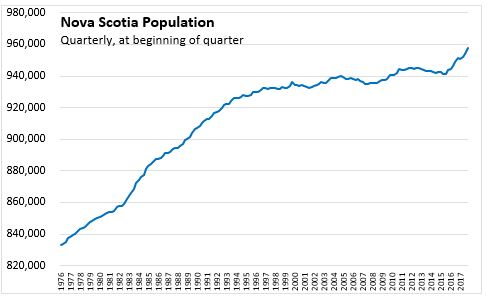
There are seasonal patterns in quarterly population changes, particularly evident in births and international migration. The most recent population increase of +3,731 is the largest for the third quarter of the year since 1984.
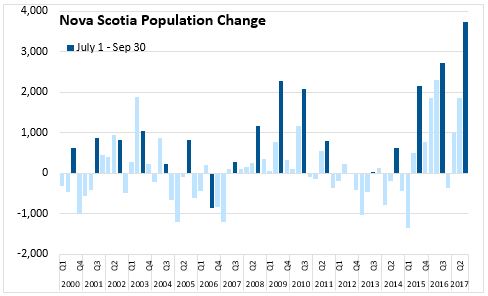
Population growth in Nova Scotia is typically slower than the national average pace. In the last quarter, Nova Scotia’s net population increase amounted to 0.39 per cent of the population as of July 1, 2017. The national population grew by 0.48 per cent over this period. Compared with October 1, 2015 Nova Scotia’s population has increased by 0.66 per cent while the national population grew by 1.29 per cent.
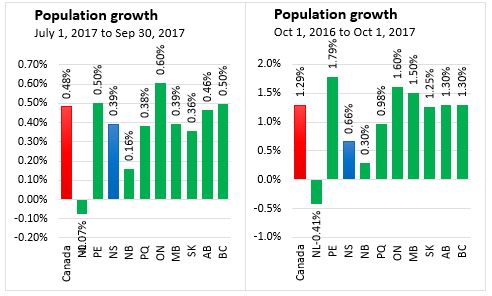
In recent quarters, immigration from other countries has been a strong contributor to population growth in Nova Scotia. Nova Scotia received 1,160 immigrants during the third quarter of 2017. This is the fourth largest number on record for a single quarter, after the 1,849 immigrants who arrived in Nova Scotia in the first quarter of 2016 and the 1,621 who arrived in the second quarter of 2016, both of which included significant numbers of Syrian refugees.
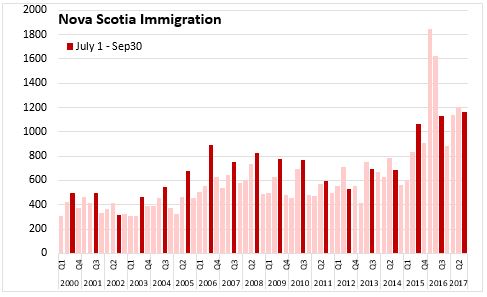
Nova Scotia’s ‘natural’ population change (the number of births, less the number of deaths) has been negative for several years, with the exception of the regular Q3 increase in births. Q1 is regularly the quarter with the lowest natural population change of the year, as a result of the regular Q1 decrease in births. Between July 1, 2017 and September 30, 2017, there were 2,366 births and 2,238 deaths, amounting to a natural population increase of 128.
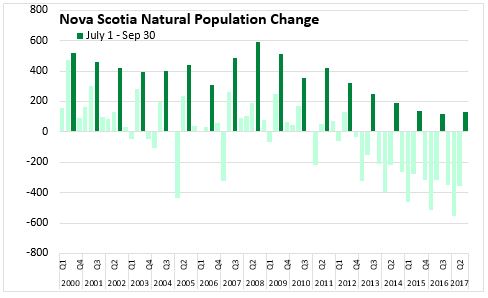
Interprovincial migration has typically been a drain on Nova Scotia’s population. From July 1, 2017 to September 30, 2017 there was a net inflow of 827 interprovincial migrants from Nova Scotia. This represents the largest net interprovincial migration since 2003.
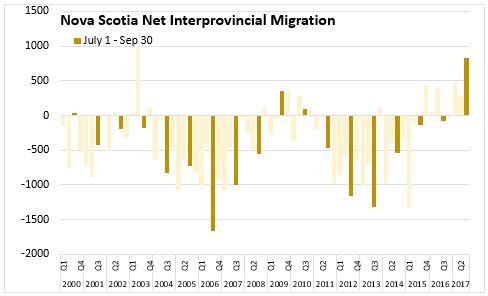
Outmigrants from Nova Scotia to other provinces fell once again over this quarter. With the exception of Newfoundland and Labrador, all provinces saw a decrease in the number of Nova Scotians arriving during the quarter. Net flows across the country mostly pointed toward Nova Scotia as a interprovincial destination, with the exception of PEI, which received a net 21 Nova Scotians (averaging the last five years of 3rd quarter results shows a net flow of 40 to Nova Scotia from PEI).
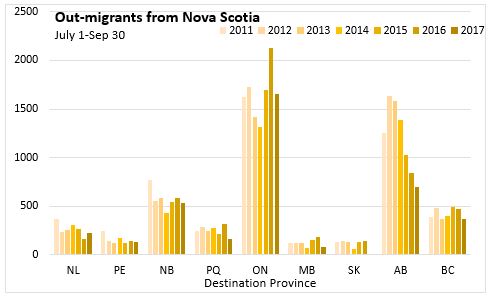
In-migrants to Nova Scotia were once again largest from Ontario, Alberta, and New Brunswick. There was a notable increase in migrants from Ontario compared to previous 3rd quarter movements.
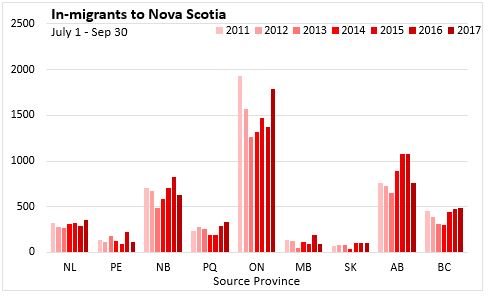
In aggregate, net interprovincial migration from Nova Scotia to Alberta has switched in recent years from a net outflow to a net inflow (though the inflow is shrinking in size) and the net outflow to Saskatchewan has become an inflow. The net inflow from Ontario, Quebec, and BC have had the highest increases this quarter.
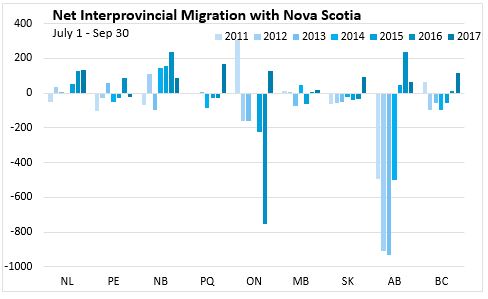
The net increase in the number of non-permanent residents in Nova Scotia from July 1 to October 1 was a significant contributor to population growth in the third quarter, with a net increase of 1,882. The third quarter is usually the largest quarter for increases in non-permanent residents, as a result of new international students starting school in September. This was the largest single quarter increase in non-permanent residents living in Nova Scotia on record.
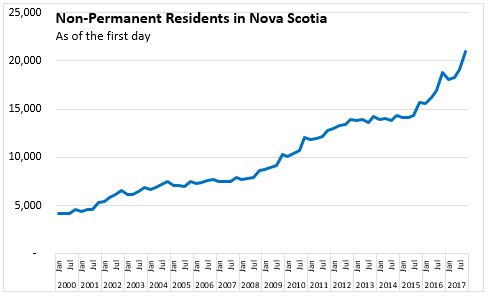
Statistics Canada Cat. No. 91-215
Source:
Quarterly Demographic Estimates, Statistics Canada. Pub 91-002-X (free)
Statistics Canada CANSIM tables: 051-0005 (Population estimates), 051-0017 and 051-0045 (Interprovincial Migrants), 053-0001 (Births and Deaths), 051-0037 (International Migrants)
<--- Return to Archive